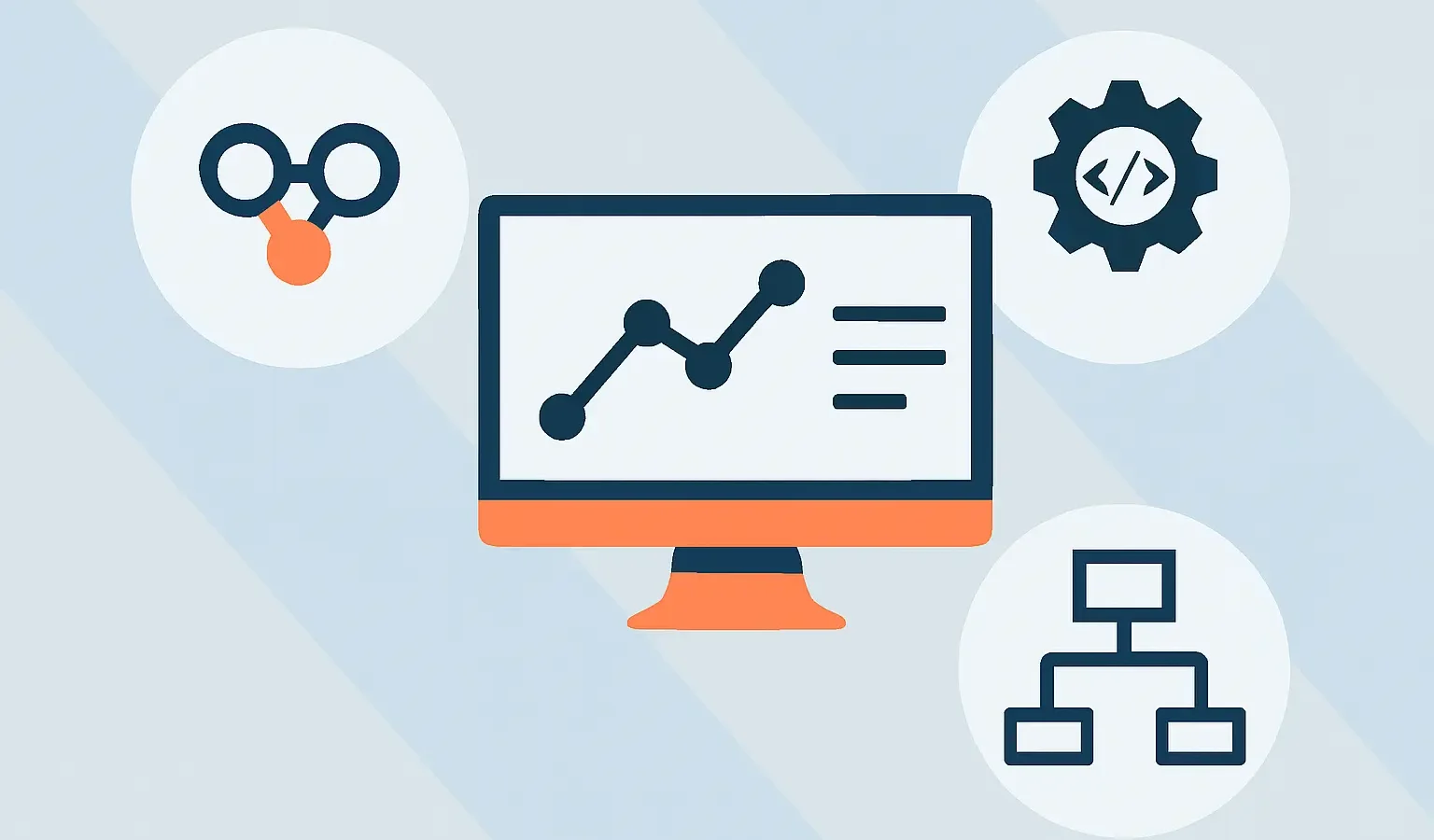Native HubSpot integrations work until your data and workflows get too complex. Discover how custom HubSpot integrations bridge the gaps and build truly connected systems that scale with your business.
Key Takeaways
Before diving deeper, here’s what you’ll take away from this guide on overcoming native integration limits and scaling with custom solutions:
- Native integrations solve basic needs but limit scale and flexibility.
- Data silos and sync errors cost time and insight.
- Custom HubSpot integrations unify data across marketing, sales, and ops.
- Tailored workflows improve accuracy, speed, and reporting.
- Knowing when to go custom saves resources and accelerates growth.
The Bigger Picture: Why Integration Strategy Defines Growth Today
Modern businesses depend on connected data ecosystems. As your systems evolve, a basic integration strategy quickly becomes a growth bottleneck.
HubSpot’s native integrations offer convenience, but they can’t adapt to complex workflows, cross-department automation, or unique data models. That’s where custom HubSpot integrations come in turning disconnected tools into a unified growth engine.
The Hidden Costs of Relying on Native HubSpot Integrations
Most businesses start with native HubSpot integrations because they’re quick and easy. Over time, those same shortcuts can create inefficiencies that slow down your entire operation.
Let’s look at where they fall short and how custom HubSpot solutions can fill the gaps.
1. One-Size-Fits-All Doesn’t Fit Complex Workflows
Native integrations are built for general users, not your specific logic or data structures. When your workflows get more sophisticated, one-size-fits-all tools start to fail.
A custom HubSpot integration ensures every automation, data field, and condition matches how your business actually operates.
2. Data Silos Lead to Disconnected Decisions
Native connectors often sync only basic data like contacts or deals, leaving out key details like behaviors, campaigns, or financial metrics.
With HubSpot CRM integration and HubSpot data integration, every engagement from form fill to final deal flows seamlessly across systems, giving teams one unified view of the truth.
3. Manual Workarounds Drain Time and Accuracy
When integrations don’t connect everything, teams spend hours fixing sync issues or exporting spreadsheets.
Custom integrations eliminate manual tasks by automating the entire workflow from data capture to reporting, saving both time and accuracy.
The Business Case for Custom HubSpot Integrations
As your systems grow, so does the need for data harmony. Custom HubSpot integrations deliver the control, reliability, and automation that native tools can’t provide.
Let’s look at how they strengthen scalability, integrity, and alignment across departments.
Scale Without Limits
Custom HubSpot API integrations are designed around your exact ecosystem. They grow with your business, handling larger datasets, multiple APIs, and evolving workflows effortlessly.
Protect Data Integrity Across Systems
HubSpot data integration validates, cleans, and structures information before it enters your CRM. That means cleaner dashboards, accurate reporting, and consistent analytics across every channel.
Align Every Department for a Shared View of Success
Custom HubSpot integrations ensure every team from marketing to finance has the same accurate data, enabling faster alignment and smarter decision-making.
How Custom HubSpot Integrations Create a Competitive Edge
The difference between connected and fragmented systems can determine how fast you grow. By building custom HubSpot solutions, you move from manual fixes to scalable, intelligent automation.
Below are three core ways they strengthen your competitive positioning and operational efficiency.
From Reactive to Predictive Growth
Custom integrations make it possible to connect advanced analytics, helping you predict trends instead of reacting to them.
From Manual Oversight to Automated Precision
With HubSpot workflow automation, repetitive tasks disappear. Your teams can focus on strategy while your integrations handle the routine accurately and instantly.
From Rigid Systems to Future-Proof Operations
Custom integrations evolve alongside your tech stack. As new tools or data sources enter your HubSpot tech stack, the integration layer adapts automatically, keeping everything in sync.
5 Signs You’ve Outgrown Native HubSpot Integrations
If your integrations create more work than they solve, it’s time to re-evaluate. Below are the most common warning signs that it’s time to transition to custom HubSpot integrations.
- Workflows break when data moves between systems.
- Reports contain duplicates or missing entries.
- Manual exports are required for key analytics.
- Campaign results aren’t reflected across platforms.
- Teams can’t rely on consistent data visibility.
Things To Watch Out For
Even the best integrations can fail without proper planning. Before you invest in customization, watch out for these avoidable mistakes.
- Building without clearly defined workflows.
- Ignoring scalability or API limitations.
- Making every sync bi-directional unnecessarily.
- Skipping training for end-users.
- Forgetting to document the integration logic.
- Not partnering with experienced HubSpot custom development experts.
What Marketers Should Do Now
Moving to a custom solution doesn’t have to be overwhelming. Here’s a simple, strategic roadmap to get started with confidence.
- Audit where current integrations fail or create data gaps.
- Identify workflows that rely on manual steps.
- Prioritize high-impact areas for automation.
- Partner with experts in custom HubSpot integrations for tailored solutions.
- Create a roadmap for phased rollout and long-term scalability.
FAQs
When should a business move from native to custom HubSpot integrations?
When your workflows demand advanced automation or multi-system syncs, native tools fall short. Custom HubSpot integrations provide the flexibility to scale.
How do custom HubSpot integrations improve data accuracy?
They clean, validate, and structure data before it enters HubSpot ensuring reliable reporting and analytics.
Are custom HubSpot integrations difficult to maintain?
No. With proper documentation and expert support, they remain stable, adaptable, and easy to update as your tech stack evolves.
Can custom HubSpot integrations grow with my business?
Yes. They’re built to scale accommodating new tools, teams, and workflows without rebuilding from scratch.
Bottom Line
Native integrations connect tools. Custom HubSpot integrations connect growth. When you’re ready to move from basic automation to strategic scalability, custom solutions deliver measurable impact.
Integrate IQ helps mid-market leaders build smarter, faster, and future-ready HubSpot ecosystems. Talk to Integrate IQ today to explore how custom integrations can transform your business.


